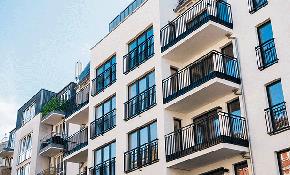Recommended Stories
Experts on Emerging Trends in Retail
From pricing to tenants changing their prototypes to adaptive reuse, these three executives give their take on retail.
Confidence in Multifamily Continues to Slide
Concerns in the sector has been growing as rent growth stalled and transaction volumes are far down.
Nominations Open for Industrial Influencers
GlobeSt. will honor the professionals, teams and firms that continually drive the sector’s performance as the 2024 Influencers in Industrial. Nominate a candidate before the June 5th deadline!
Resource Center

Guide
Sponsored by Assurant
A Guide to Choosing the Best Renters Insurance Program for Multifamily Housing
This comprehensive guide walks you through how to find the right partner to help you mitigate risk, drive ancillary revenue per unit, and improve net operating income.

Guide
Sponsored by LeaseAccelerator
The Real Estate Leader's Quick Guide: Insights for Better Lease Administration
Better decisions come from better data, insight and coordination. Download this guide for insights on how to optimize the lease administration process and recommendations for best practices to deliver increased ROI across the lease lifecycle.

Guide
Sponsored by HqO
How to Develop a Real Estate Experience (REX) Strategy for Your Tenants
Discover how to transform your real estate assets from mere spaces into vibrant experiences that captivate tenants -- and their employees -- to support engagement and retention.
GlobeSt

Don't miss crucial news and insights you need to make informed commercial real estate decisions. Join GlobeSt.com now!
- Free unlimited access to GlobeSt.com's trusted and independent team of experts who provide commercial real estate owners, investors, developers, brokers and finance professionals with comprehensive coverage, analysis and best practices necessary to innovate and build business.
- Exclusive discounts on ALM and GlobeSt events.
- Access to other award-winning ALM websites including ThinkAdvisor.com and Law.com.

 Copyright © 2024 ALM Global, LLC. All Rights Reserved.
Copyright © 2024 ALM Global, LLC. All Rights Reserved.












